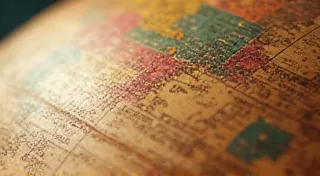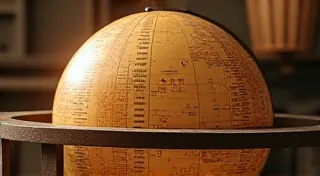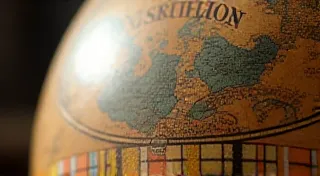Globe Stand Restoration: Wood, Metal, and the Original Finish
The globe itself is often the star of the show, but a globe is only as good as its stand. A damaged or deteriorated stand can detract significantly from the overall beauty and value of an antique globe. This guide details comprehensive restoration techniques for both wooden and metal globe stands, focusing on preserving historical details and recreating the original finish whenever possible.
Understanding Your Globe Stand
Before you begin any restoration, careful assessment is crucial. Note the material – is it wood, metal (brass, iron, or other alloys?), or a combination of both? Examine the type of damage: cracks, chips, rust, discoloration, or loss of finish. Understanding the construction and the original finish will inform your approach. The process often begins with stabilizing the globe itself, and sometimes that means addressing issues like stabilizing warped globe paper - a seemingly separate issue that directly impacts the stand's role in presentation and preservation.
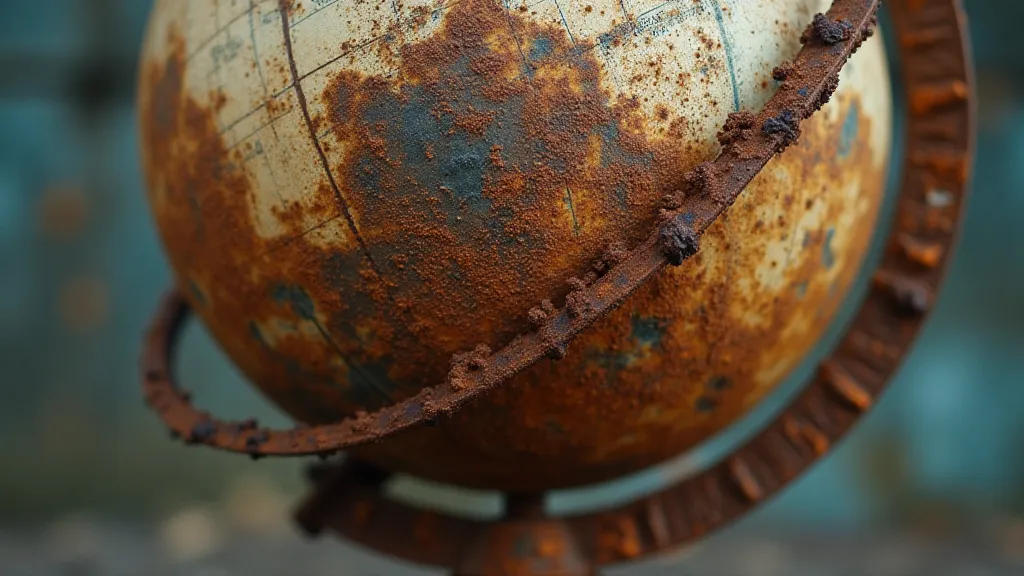
Restoring Wooden Globe Stands
Wooden globe stands are commonly made from hardwoods like mahogany, walnut, or oak. The restoration process involves several steps:
1. Cleaning
Begin by removing surface dirt and grime. Use a mild soap solution (dish soap is fine) and a soft cloth. Avoid harsh chemicals that can damage the wood. For stubborn dirt, a slightly damp cloth and gentle scrubbing may be necessary. Over time, the finish on wooden stands often develops a desirable patina, and deciding whether to fully restore or simply maintain that aged appearance is a key consideration. For those seeking to preserving the patina on their globe stand, a less aggressive cleaning approach, focusing on gentle solvents and specialized cloths, might be more suitable.
2. Repairing Damage
Cracks and chips require careful repair. For small cracks, wood filler that matches the wood type can be applied. For larger chips or missing pieces, you might need to use epoxy wood filler or even consider patching with carefully shaped replacement wood. Allow the filler to dry completely and sand it smooth, blending it seamlessly with the surrounding wood.
3. Stripping the Old Finish
The original finish is often layers of varnish, shellac, or lacquer. Stripping is necessary to reveal the bare wood. Chemical strippers are effective, but follow the manufacturer's instructions carefully and work in a well-ventilated area. Alternatively, careful sanding can remove the old finish, but this method is more time-consuming and carries a higher risk of damaging the wood grain. Consider that in some cases, the original finish may be fragile and simply needs consolidation rather than complete removal. Complete stripping can also impact the structural integrity of older stands, so a phased approach to finish removal is often preferred.
4. Refinishing
Once the old finish is removed, apply a new finish. Consider the original finish. If you know what it was (e.g., shellac, varnish, or lacquer), replicating it will help maintain the globe’s historical integrity. Apply thin, even coats, allowing each coat to dry completely before applying the next. Lightly sand between coats for a smoother finish. Consider a tinted finish to subtly match the original color. Knowing when to fully refinish versus simply repairing loose sections of the original finish is a crucial element of a successful restoration.
Restoring Metal Globe Stands
Metal stands, often made of brass or iron, require a different approach. Rust is the most common issue.
1. Rust Removal
Rust removal is paramount. For light surface rust, a wire brush and steel wool can be used. For heavier rust, consider a chemical rust remover. Follow the product instructions carefully. Electrolytic rust removal is another effective method, although it requires specialized equipment. The extent of rust often dictates the repair strategy, and severely damaged areas may require specialized welding or fabrication techniques.
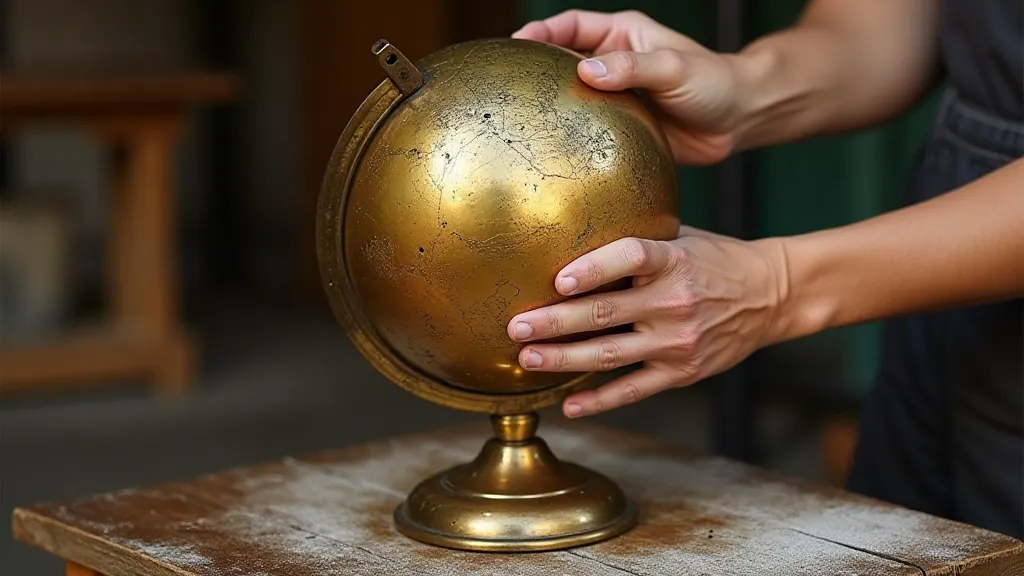
2. Cleaning and Polishing
After rust removal, clean the metal thoroughly to remove any residue from the rust remover. Then, polish the metal to restore its shine. Brass and bronze respond well to specialized polishing compounds. Iron might require a less aggressive polish. Maintaining the shine of a metal globe stand can be surprisingly labor-intensive, often requiring regular polishing to prevent the re-emergence of tarnish or corrosion.
3. Protecting the Metal
To prevent future corrosion, apply a protective coating. A clear lacquer or wax can help seal the metal and prevent rust. For brass, a tarnish-resistant lacquer can be applied. Proper ventilation is essential during the application and drying of these protective coatings.
Preserving the Original Finish – When Possible
Ideally, preserving as much of the original finish is the best approach. This requires expertise and a delicate touch. Instead of stripping entirely, focus on spot repairs and cleaning. Consolidation of flaking finishes, careful cleaning with appropriate solvents, and touch-up applications can often prolong the life of the original finish and maintain the globe's historical authenticity. Consulting with a professional conservator is recommended for valuable or particularly fragile globes. Sometimes, simply repairing loose globe paper on the stand's surface can dramatically improve the overall visual integrity, preventing further degradation of both the map and the surrounding finish.
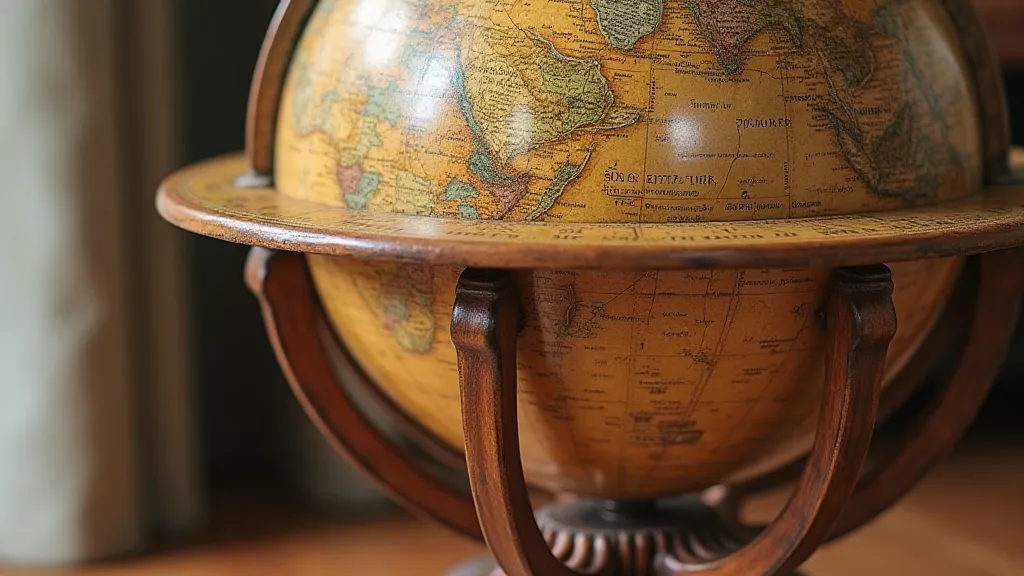
Expanding on Specific Restoration Challenges
Beyond the general steps outlined above, certain aspects of globe stand restoration present unique challenges. For example, many antique globe stands feature intricate carvings or decorative elements. When restoring these features, it’s crucial to exercise extreme care to avoid damaging them. Gentle cleaning methods and specialized tools are often necessary. Similarly, the joints and hinges of globe stands can become loose or corroded over time. Careful lubrication and, in some cases, re-soldering or re-pinning may be required to restore their functionality. The materials used in antique globe stands can also vary significantly. For instance, some stands may incorporate ivory or other organic materials, which require specialized conservation techniques.
The Importance of Documentation
Throughout the restoration process, meticulous documentation is essential. Taking detailed photographs before, during, and after each step allows you to track your progress and serves as a valuable reference for future repairs. Detailed notes on the materials used, the techniques employed, and any unexpected challenges encountered will also prove invaluable. This documentation not only enhances the value of the restored globe stand but also contributes to the broader understanding of antique globe conservation practices.
Final Thoughts
Restoring an antique globe stand is a rewarding process that combines craftsmanship and historical appreciation. Whether you’re dealing with wood or metal, careful planning, meticulous execution, and a respect for the globe’s history will result in a beautiful and cherished heirloom. Remember to assess the level of damage, prioritize preservation whenever possible, and seek professional help when needed. The process is more than just fixing an object; it's about preserving a piece of history for generations to come. The challenges involved are significant, but the satisfaction of bringing a damaged antique globe stand back to its former glory is well worth the effort.
